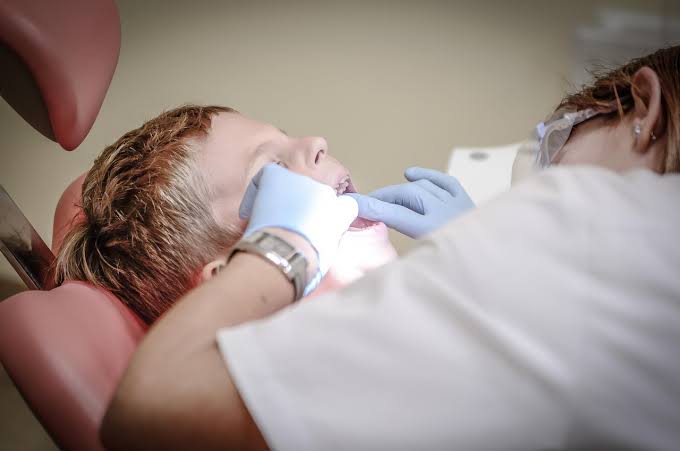For many people, a trip to the dentist comes with nervousness, tension, or even fear. Dental anxiety can make it difficult to get the care you need, leading to delayed treatments and worsening oral health. Dentists have long searched for ways to make visits more comfortable, and one option that is gaining more attention is IV sedation dentistry. This method offers a safe, effective way to keep patients calm during procedures, making the experience easier for both patients and providers. As more people discover its benefits, IV sedation is becoming a trusted solution for stress-free dental care.
Understanding IV Sedation Dentistry
How IV Sedation Works in Dental Procedures
IV sedation dentistry involves administering medication directly into the bloodstream through a small needle in the arm or hand. This allows the dentist to control the level of sedation throughout the procedure. Unlike general anesthesia, IV sedation keeps patients in a deeply relaxed state while still able to respond to instructions. Many patients remember little to nothing about the procedure afterward, making it ideal for those with high anxiety.
Common Misconceptions That Keep Patients from Trying It
Some believe IV sedation is unsafe or only used for major surgeries. In reality, it is widely used for routine dental care and is carefully monitored by trained professionals. Others worry they will be completely unconscious, but IV sedation is different from being “put to sleep”—patients are relaxed but still maintain protective reflexes.
When IV Sedation Is the Best Choice
Ideal Candidates for IV Sedation Dentistry
IV sedation is recommended for:
- Patients with severe dental anxiety or phobia
- Those with a strong gag reflex
- Individuals requiring multiple treatments in one visit
- Patients with difficulty getting numb through local anesthesia alone
- People undergoing lengthy or complex procedures, such as wisdom tooth extraction or dental implant placement
By making the experience more comfortable, IV sedation helps patients get necessary care without avoiding the dentist.
Risks of Avoiding Sedation When It’s Recommended
Skipping sedation when anxiety is high can lead to incomplete treatment, increased discomfort, and longer appointment times. In some cases, patients may postpone important procedures, allowing problems like tooth decay or gum disease to progress.
Benefits of Choosing an IV Sedation Dentist
Reducing Anxiety and Building Positive Dental Experiences
For many patients, fear of the dentist comes from past negative experiences. IV sedation allows those patients to feel at ease, changing the way they view dental care. Over time, this can help rebuild trust and reduce anxiety for future visits.
How Skipping Sedation Can Lead to Incomplete Treatment
Without sedation, some patients can’t remain still or relaxed long enough to complete complex procedures. This can mean more visits, higher costs, and prolonged discomfort.
Safety and Recovery with IV Sedation
Safety Protocols That Protect Patients During Sedation
IV sedation is performed under strict safety guidelines. Dentists or dental anesthesiologists monitor vital signs—such as heart rate, blood pressure, and oxygen levels—throughout the procedure. Emergency equipment is kept on hand, and the sedation dose is carefully adjusted for each patient’s needs.
Mistakes Patients Make That Delay Recovery
Recovery from IV sedation is generally quick, but driving immediately afterward or ignoring aftercare instructions can slow the process. Patients should arrange for someone to drive them home and follow all post-procedure guidelines to ensure a smooth recovery.
Comparing Sedation Options
IV Sedation vs. Oral Sedation vs. Nitrous Oxide
- Oral Sedation: Taken as a pill before treatment, it provides mild to moderate relaxation but is less precise than IV sedation.
- Nitrous Oxide: Also known as laughing gas, it offers light sedation and wears off quickly, but may not be strong enough for longer or more complex procedures.
- IV Sedation: Provides adjustable, deeper sedation with rapid onset and greater control, making it ideal for more anxious patients or lengthy treatments.
Choosing the Wrong Sedation Method for Your Needs
If sedation is too light, patients may still feel anxious or uncomfortable. If it’s too strong for a simple procedure, recovery time may be longer than necessary. A qualified dentist can assess your needs and recommend the best option.
Why IV Sedation Is Gaining Popularity Among Dentists and Patients
Meeting the Needs of Modern Dental Care
Today’s dental practices aim to combine advanced technology with patient comfort. IV sedation supports this goal by making it possible to complete more work in a single visit, reduce the need for multiple appointments, and improve patient satisfaction.
The Word-of-Mouth Effect
As more patients share their positive experiences with IV sedation, others feel encouraged to try it. This creates a ripple effect where more people feel comfortable seeking the dental care they’ve been avoiding.
Conclusion
Dental anxiety is a real barrier for millions of people, but it doesn’t have to prevent you from getting the care you need. IV sedation dentistry offers a safe, effective, and patient-friendly way to ensure treatments are completed without stress or discomfort. By working with a trained IV sedation dentist, patients can replace fear with comfort and leave the office with both a healthier smile and a more positive outlook on dental care. As more people experience its benefits, IV sedation is proving to be a valuable tool for making dentistry truly stress-free.



































